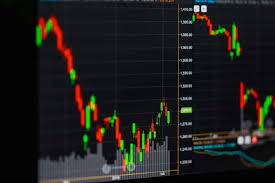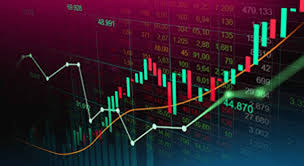Casino Uden Rofus Sobre Bedste Spil Uden Om Rofus I Actually 2025
30/10/2025The Thrilling Experience of Oz Wins Casino Where Luck Meets Fun
30/10/2025
In the vast world of finance, forex trading system Trading Broker Global plays a pivotal role in connecting traders with opportunities. Forex trading systems are the backbone of successful trading, offering structured methodologies and analytical tools to navigate the complexities of the foreign exchange market. This article delves into the various types of forex trading systems, their components, and how traders can effectively utilize them to enhance their trading experience and maximize their profits.
Introduction to Forex Trading Systems
Forex trading systems are defined as structured methodologies used by traders to buy and sell currency pairs in the forex market. These systems can vary in complexity, ranging from simple rule-based strategies to sophisticated algorithms. The overarching goal of any forex trading system is to generate profit while managing risk effectively.
The Importance of Having a Trading System
Having a well-defined trading system is crucial for several reasons:
- Consistency: A trading system instills discipline in traders, promoting consistent decision-making based on predefined rules rather than emotional impulses.
- Risk Management: Most trading systems incorporate risk management techniques which help in protecting the trader’s capital.
- Backtesting: A good trading system allows traders to backtest their strategies against historical data, offering insights into potential profitability and shortcomings.
- Time Efficiency: Automated systems can save time, executing trades based on preset criteria without the need for constant monitoring.
Components of a Forex Trading System
A robust forex trading system typically comprises several key components:
- Trading Strategy: This is the core of the trading system, detailing the entry and exit points, risk tolerance, market conditions to trade, etc.
- Indicators and Tools: Traders often use various technical indicators (like moving averages or the RSI) and tools (like charts and graphs) to analyze market trends and make informed decisions.
- Risk Management Rules: This includes determining the maximum allowable loss per trade, the use of stop-loss and take-profit orders, and position sizing.
- Trading Journal: Keeping track of trades, strategies used, and their outcomes is essential for refining a trading system over time.

Types of Forex Trading Systems
Forex trading systems can be broadly categorized into different types, each catering to different trading styles and philosophies:
1. Manual Trading Systems
In manual trading, traders execute trades based on their analysis and discretion. This system emphasizes the trader’s ability to read the market and make timely decisions. While it offers flexibility, it can be prone to emotional decision-making.
2. Automated Trading Systems (EAs)
Automated trading systems or Expert Advisors (EAs) use algorithms to enter and exit trades automatically based on pre-defined criteria. These systems can operate 24/5, making them ideal for traders who cannot be glued to their screens.
3. Algorithmic Trading Systems
Algorithmic trading involves using sophisticated mathematical models and strategies to optimize trading. This system is typically employed by institutional traders and requires significant technical knowledge.

4. Hybrid Systems
Hybrid systems combine the best of manual and automated trading. Traders may use automated systems to identify potential trades and then execute them manually based on their discretion.
How to Create Your Own Forex Trading System
Developing a successful forex trading system involves several steps:
- Define Your Goals: Determine what you want to achieve from trading (e.g., supplementary income, full-time trading). This will guide your system’s parameters.
- Choose a Trading Style: Decide whether you prefer day trading, swing trading, or position trading. Your trading style will influence the system you create.
- Select Indicators: Choose indicators that suit your strategy. Common indicators include MACD, Bollinger Bands, and Fibonacci retracement levels.
- Develop Rules: Formulate clear entry, exit, and risk management rules. The clearer these rules are, the easier it will be to follow them consistently.
- Backtest the System: Use historical data to test your system’s performance. Look for consistent profitability and optimize as necessary.
- Start Trading: Once you’re confident in your system, begin trading with a demo account before transitioning to a live account.
Tips for Successful Forex Trading
To navigate the forex market successfully, consider the following tips:
- Keep Learning: The forex market is dynamic. Committing to lifelong learning will help you adapt and improve your strategies.
- Manage Your Emotions: Emotional control is vital. Fear and greed can lead to poor trading decisions; sticking to your rules is essential.
- Practice Risk Management: Never risk more than you can afford to lose. Always use stop-loss orders and calculate the risk/reward ratio before entering a trade.
- Stay Informed: Be aware of economic news and events that can influence currency pairs; having a fundamental understanding can enhance your technical analysis.
Conclusion
Forex trading systems are integral tools for traders aiming to succeed in the competitive forex market. By understanding the components, types, and methodologies behind these systems, traders can sharpen their skills, reduce emotional influences, and improve their chances of profitability. Whether you choose to develop a manual or automated system, the key remains consistent application and continuous learning. With the right approach to forex trading, success is not just a possibility but an achievable goal.


